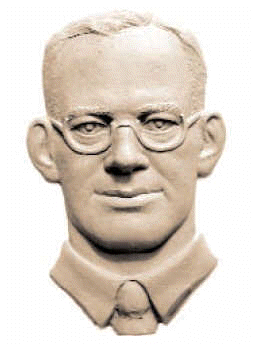Gareth Jones
[bas relief by Oleh Lesiuk]
HOME |
Stop Press |
Complete Soviet Articles & Background Information |
Précis of Gareth's
|
All Published Articles |
BOOKS
|
|
|
|
More Than Grain of Truth(2005) |
|
|
TOPICAL
'Are you Listening NYT?' U.N. Speech - Nov 2009 |
Gareth Recognised at Cambridge - Nov 2009 |
Reporter and the Genocide - Rome, March 2009 |
Order of Freedom Award -Nov 2008 |
Premiere of 'The Living' Documentary Kyiv - Nov 2008 |
Gareth Jones 'Famine' Diaries - Chicago 2008 |
Aberystwyth Memorial Plaque 2006 |
GENERAL
Scholarship Fund |
Site Map |
Links |
Legal Notices |
Sponsored Links |
Contact |
The Western Mail February 14th 1934With Horse and Hounds Jack Poletty of the Glyn Celyn BeaglesBy GARETH JONESWiry, old Jack Poletty, the kennelman of the Glyn Celyn Beagles, came hurrying out of the stables with the unmistakable gait of a man who has spent his life in the saddle. What a Shakespearean figure he looked! The faithful groom and servant type, loving horses and dogs; a type which has not changed for centuries. He fitted the scene - the yellow cottages with the date A.D. 1616, the year of Shakespeare’s death, carved over the door, the barking of the beagles from the kennels, the cobblestones in the courtyard, and the dark, towering pine trees out against the hazy blue hills. In a few moments the beagles leapt around. There was “Duster,” going a bit grey now. “That’s ‘Ranger,’ the fighter,” said Major Beor-Roberts, owner of these, the Glyn Celyn Beagles. “That’s Artful,’ the first pup we had, and a good hound he’s been, too. That’s ‘Purity’ and that’s ‘Duchess.’” Such was my introduction to the Glyn Celyn pack, Breconshire, on a day when the sun shone down on brown ploughed fields around. Cunning HaresThey looked a healthy, useful pack. And hard they have to be in a county like Brecon, where you have the toughest, brightest hares in the world. They do not breed the soft kind there, but hard-going, cunning hares which take more killing than in any other county. What better traveller could you find than the black-backed mountaineer, real Welshman, smaller than the usual hare, with the stocky mountaineer’s grit and strength? “We’ve too many hares,” said Major Beor-Roberts. “They run a relay race. As soon as one gets tired another pops up!” So strong are the hares that during a day’s coursing the greyhounds raised over 40 hares, but only killed six. But the Glyn Celyn pack are as determined as their quarry. On one occasion they were two hours 25 minutes hunting one hare. Oxford BloodThese beagles were started six seasons ago, and the best drafts were obtained from the New College and Balliol pack and from the Christ Church Beagles. They are, therefore, truly Oxford in sympathy, and combine the brains of Balliol with the blue blood of Christ Church. They hunt a very short season, from the beginning of October to the end of January or early February. “I stop them then,” said Major Beor-Roherts, “because I don’t think it is fair to the farmers. When lambs are about or the ewes are heavy with lamb the beagles move them too much.” The Glyn Celyn Beagles have an occasional joint meet with Mr. de Courcey Parry’s pack from Clun Forest, Shropshire. They are fortunate in their master, Major Beor-Roberts, who was in the 24th Regiment (South Wales Borderers). Everything about him and about his estate has a healthy, home-spun character-the masks of foxes in the hall, the old engravings (“The First Steeplechase on Record,” depicting horsemen in night-shirts flying over hedges, and “Whoop away! The Major in trouble!“), the pictures by Ivester Lloyd, the mask of a 301b. otter killed at Buckland Rocks, and souvenirs of the days when Major Beor-Roberts hunted in Spain with the Royal Calpé Hounds, supposed to be descended from Wellington’s hounds. Jack Poletty
The beagles are fortunate also in their kennelman, Jack Poletty, a great fellow. “Yes, sir, I’ve shaken hands with two Kings,” he told me-” King Edward and the King of Denmark.” It was a great day for him, for it was the day in 1901 when, at Windsor, he beat Sweet Charlotte, the fastest mare in England or Ireland. Now his racing days are over, and he is the dictator of the fifteen couples of beagles. “Kennel up! Kennel up!” I heard him shout, and I had my last glimpse of the beagles as they rushed at his command into the old yellow stable. |
GARETH JONES (1905 -35) |




